Key takeaways:
- Solar warranties are divided into product warranties covering defects and performance warranties ensuring energy output, with terms typically ranging from 10 to 25 years.
- A robust warranty is crucial for peace of mind and financial protection against unexpected repairs, reflecting the manufacturer’s confidence in their technology.
- Understanding warranty terms, including coverage specifics and transferability, is vital to prevent costly surprises and enhance resale value.
- Choosing a reputable warranty provider is essential, as customer support and financial stability can significantly impact the ownership experience.
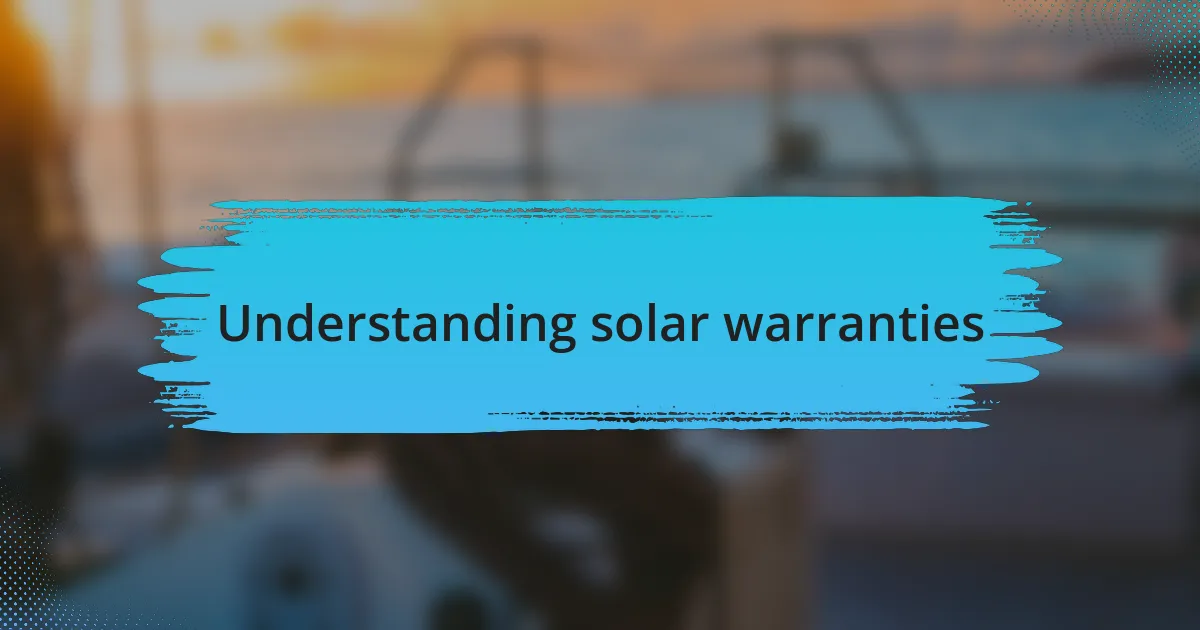
Understanding solar warranties
When I first delved into solar warranties, I was struck by how they serve as a safety net for my investment. It’s essential to distinguish between the product warranty, which covers defects, and the performance warranty, which guarantees energy output over time. Have you ever wondered how these warranties could impact the longevity and efficiency of your solar system?
As I navigated my own solar journey, I learned that the length of a warranty can often indicate the manufacturer’s confidence in their product. Most reputable brands offer warranties ranging from 10 to 25 years. I couldn’t help but feel relieved knowing that a strong warranty provided a cushion against unforeseen issues.
Engaging with the warranty terms can be overwhelming, much like the first time I tried to read through a yacht’s maintenance manual. However, breaking it down into manageable pieces allowed me to better understand what I was getting into. Understanding exclusions, transferability, and the conditions under which the warranty is valid can save you from unexpected disappointments later on.
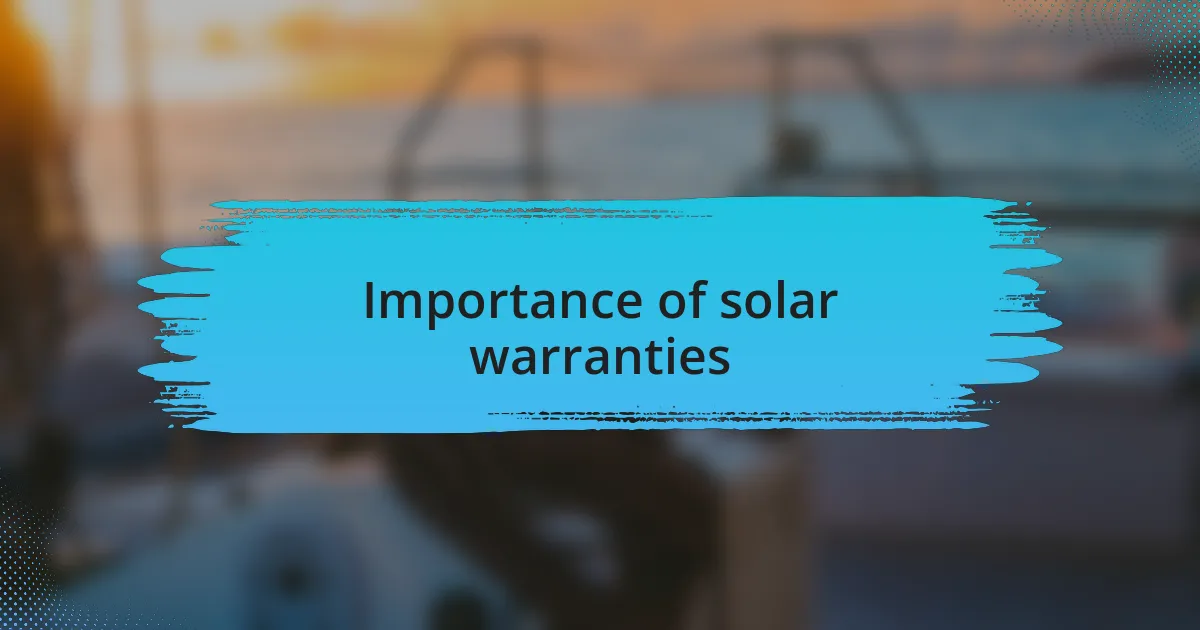
Importance of solar warranties
Solar warranties hold significant importance, especially when considering the heavy investment in a solar system for a yacht. I remember the moment I realized that without a strong warranty, potential defects could turn my financial commitment into a gamble. It left me with a haunting question: could I really afford unexpected repairs or system failures?
One aspect that struck me was the peace of mind provided by a robust warranty. There’s something reassuring about knowing that should an issue arise, I wouldn’t be left stranded with hefty repair costs. I often reflect on how similar it is to having a sound insurance policy; the comfort it brings is invaluable, especially when you’re thousands of miles from the nearest port.
Evaluating solar warranties also made me appreciate the long-term benefits of investment security. When I was reviewing the warranty terms, I realized that a commitment of 20 years or more not only safeguarded my purchase but also hinted at the trust the manufacturer has in its own technology. It’s a reminder to always ask: how does the warranty reflect on the brand’s reliability?

Overview of solar technology
Solar technology has come a long way, particularly in the marine industry. I remember attending a yacht show and being amazed by solar panels that seamlessly integrated into the sleek aesthetics of luxury vessels. It was a revelation to see how far we’ve come from bulky, inefficient panels to sleek solar solutions that enhance both performance and style.
At its core, solar technology harnesses the sun’s energy, converting it into usable electricity through photovoltaic cells. I often wonder, how many yacht owners truly understand the mechanics behind those panels? When I first started exploring solar systems, I was surprised by the idea that the sun could power my yacht, reducing dependency on fuel while promoting sustainability. It felt like taking a step into the future.
Today’s solar systems are not just about energy efficiency; they bring exceptional advancements in energy storage and management. During my research, I learned about smart inverters that optimize energy use in real-time. This innovation changes the game for yacht owners, allowing for a more autonomous lifestyle on the water. I often ask myself, how much freedom could I gain when fully powered by the sun? The answer, I’ve found, is quite liberating.
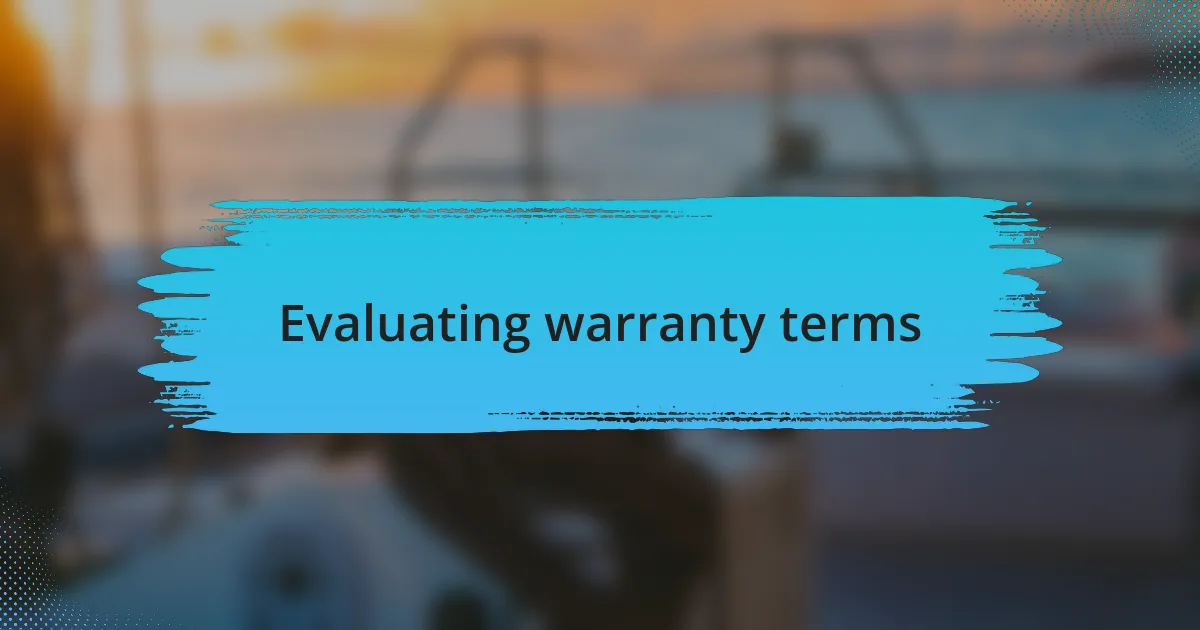
Evaluating warranty terms
When evaluating warranty terms for solar systems, I discovered that clarity is paramount. I often scrutinize the language used in warranties, as vague terms can leave you hanging when something goes wrong. For instance, I once faced a situation where a manufacturer claimed a 25-year warranty, but it turned out to cover only specific components—definitely not what I expected.
I make it a point to note what is specifically covered under the warranty. Does it include labor and shipping, or just the panels themselves? In a conversation with a fellow yacht owner, we shared stories of unexpected expenses tied to warranty claims, emphasizing how important it is to know the full scope of coverage before making a commitment. I realize that understanding these details can prevent costly surprises down the line.
Another aspect I pay attention to is the warranty transferability. Sometimes, I think about the future and whether I might sell my yacht someday. Knowing if the warranty can be passed on to a new owner gives me peace of mind. It’s one of those factors that not only affects resale value but also impacts my confidence in the investment I’m making today.
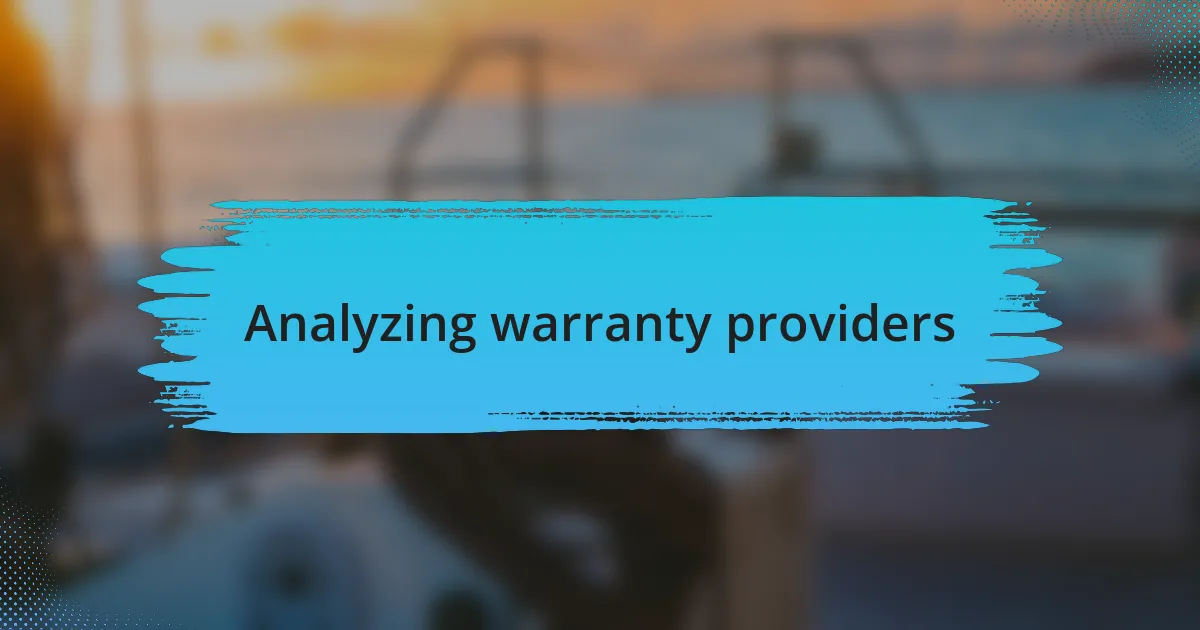
Analyzing warranty providers
When I started digging into warranty providers for solar systems, I was struck by how different their reputations can be. I remember a friend who had rave reviews for a particular brand, but when I researched further, I found numerous complaints about their customer service response times. It made me wonder—how much should reputation weigh in my decision-making process?
After considering feedback and reviews, I developed a shortlist of top contenders. In my evaluation, I looked not just for coverage but also for how warranty providers interacted with their clients during the entire claim process. I once witnessed an owner struggle with a warranty claim; the provider’s lack of support left him frustrated and feeling lost. It reinforced my belief that a strong support system is just as essential as the terms of the warranty itself.
Additionally, I explored the financial stability of warranty providers. Understanding their longevity in the market gave me assurance about their ability to fulfill claims. Reflecting on my past experiences, I realized that choosing a provider backed by solid financials can mean the difference between a secure investment and a potential headache. When I think about it, having that peace of mind significantly enhances my overall ownership experience.
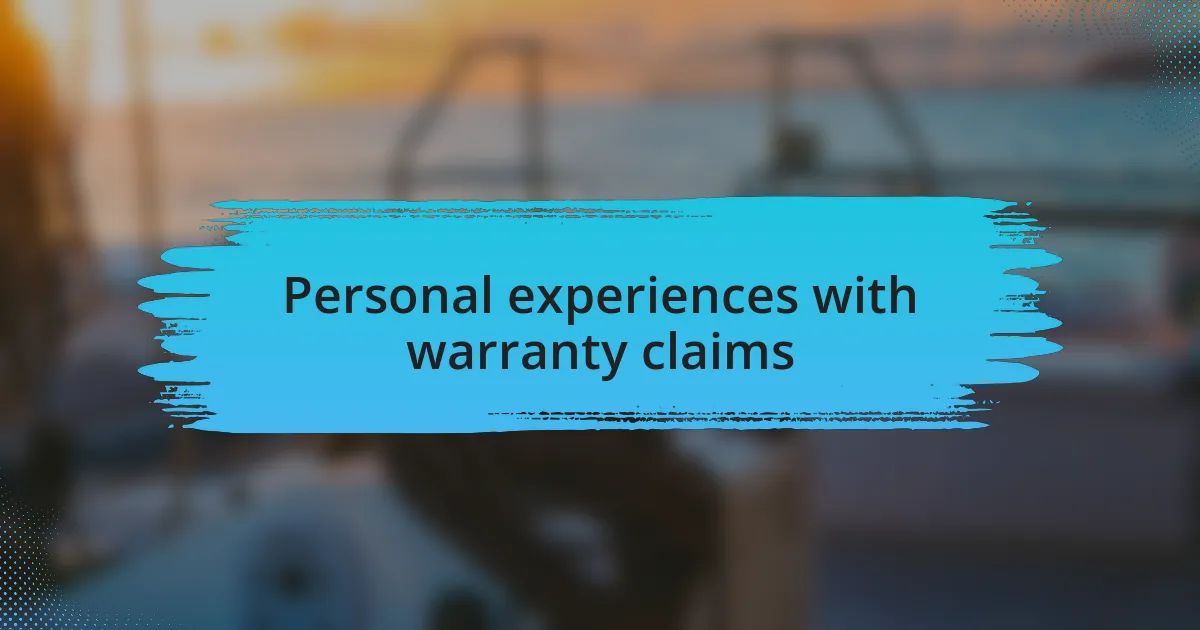
Personal experiences with warranty claims
Navigating warranty claims can be quite a journey, and I remember the time I had to submit my first one. It felt like stepping into a maze, as I gathered paperwork and filled out forms, hoping I hadn’t missed anything important. The anxiety of waiting for approval was nerve-wracking; would they accept my claim or send me on a wild goose chase?
On another occasion, I found myself in a frustrating back-and-forth with a warranty provider. They initially denied my claim due to what they deemed “user error,” but I knew the panel had malfunctioned. I crafted a detailed rebuttal, explaining my position and illustrating the issue with photos. Ultimately, persistence paid off—seeing my effort rewarded felt gratifying and reinforced my belief that staying engaged in the process is crucial.
What surprised me during these claims was how personal the experience became; it wasn’t just about the parts but also the emotional toll it took on me. I often found myself reflecting on how vital it is to choose a provider that values customer relationships. The ease of communication made a world of difference; it transformed a stressful situation into a manageable one. Why should dealing with warranty claims feel like pulling teeth? I believe it shouldn’t, and that’s why I’ve learned to prioritize supportive warranty providers in my evaluations.